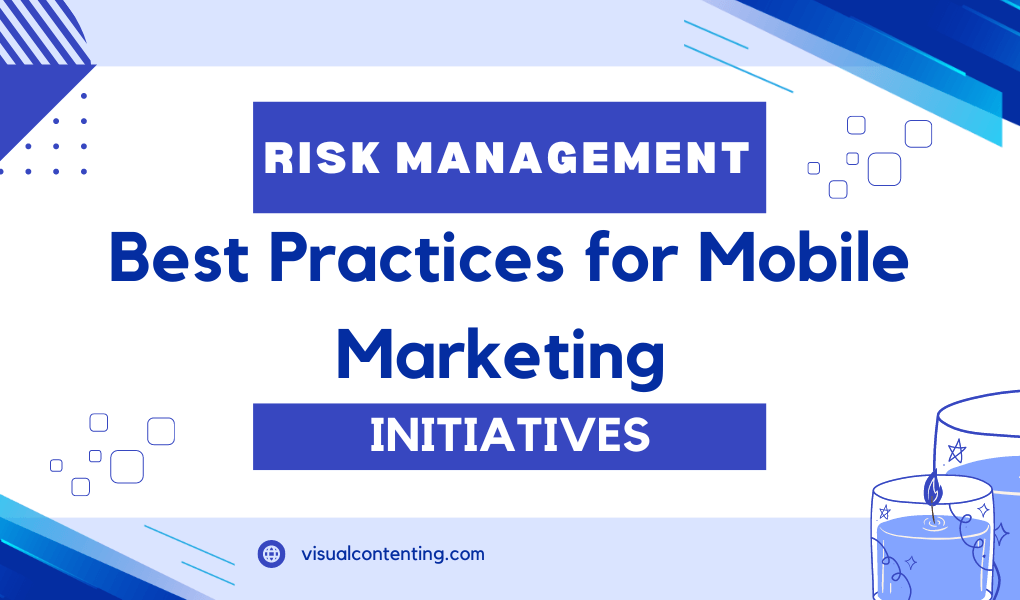Mobile marketing has become a cornerstone for brands to reach their audience effectively. However, the landscape is fraught with potential risks that can derail even the most well-planned campaigns.
From strict privacy regulations to security breaches, marketers must know how to bypass these challenges with precision. That is where risk management can come into play — it ensures marketers’ strategies are secure and compliant with today’s standards.
The Importance of Risk Management in Mobile Marketing
Data researchers expect mobile marketing spending to reach $400 billion this year and increase fivefold by 2030. Mobile platforms are clearly the place to connect with audiences, even more so as AI (artificial intelligence) tools have increased in mobile marketing strategies.
AI has offered advanced targeting capabilities, allowing for hyper-personalized content delivery due to its ability to analyze big data. With recent innovations — such as Meta’s enhanced ad features — brands are creating engaging experiences that resonate more with audiences. It makes the entire advertising experience easier for marketers and offers them more free time to strategize the next campaign.
However, marketers must understand mobile marketing comes with significant risks. From the death of the third-party cookie to evolving data privacy laws, they must be aware of the issues surrounding compliance and security in mobile advertising.
Every risk that comes with mobile marketing efforts can devastate a company’s reputation. That is why effective risk management strategies are crucial. By implementing strategies and best practices, it can mitigate risks and ensure the protection of its image and consumers.
1. Security in Mobile Transactions
Mobile transactions are a large part of mobile marketing. They offer significant convenience, which is why about 60% of shoppers have used mobile wallets to pay for items. However, there is a reason 35% of shoppers avoid using them. Smartphone transactions introduce substantial security risks, such as fraud, data breaches and exploitation of payment gateway vulnerabilities.
These security breaches can result in large financial losses and damaged buyer trust. In fact, data breaches are so common that their expense has increased by 15% within the last three years, costing $4.45 million per incident in 2023.
To prevent such occurrences, use the following methods:
- Evaluate the security of APIs, payment gateways and transaction processing systems.
- Use security monitoring tools and analytics to detect potential security threats.
- Assess the risks using the Threat Modeling framework. This involves identifying threat scenarios and determining their chances of occurrence.
- Use reputable payment gateways to provide additional layers of security for transactions.
- Implement tokenization to protect sensitive payment information. It replaces susceptible information with unique identifiers that have no exploitable value.
- Invest in comprehensive liability insurance to cover potential financial losses from security breaches. However, it’s crucial to avoid cheap insurance policies. While they may seem attractive due to their low cost, they often fail to provide adequate coverage when you need them most.
2. Data Privacy
Given the amount of personal information collected with user consent, data privacy is critical, especially as stringent regulatory measures fall into place. The risks associated with this concern include unauthorized data access, data breaches and misuse of personal information.
These incidents can lead to huge legal penalties, loss of consumer trust and severe damage to a brand’s reputation. With regulations like GDPR, CCPA, and Apple and Google’s tightened requirements, noncompliance can result in hefty fines and legal repercussions.
For marketers to identify and manage this potential risk, they must implement the following best practices:
- Review and audit data collection practices regularly. This will maintain compliance with privacy regulations and help identify potential areas where the system may be compromised.
- Create a map of data flow. This allows companies to see where they collect and share data, helping them understand the data lifecycle.
- Use an assessment framework like theadata protection impact assessment to identify and minimize data protection risks.
- Implement encryption tools to protect data while at rest and in transit.
- Ensure users provide explicit consent for data collection and processing to maintain compliance with privacy regulations.
3. Compliance and Regulatory Risks
Most marketers understand there are laws and regulations governing data privacy. However, with new advancements in AI and machine learning, these requirements continue to evolve. These technologies enable marketers to collect data and personalize mobile targeting ads.
However, many changes are taking place concerning data privacy, including the phasing out of third-party cookies. Many marketers feel the impact of these changes, and uncertainty increases as they scramble to prepare to meet new requirements. Compliance with these new regulations is a major concern in mobile marketing, but they can adapt by following several strategies:
- Stay up to date with the latest developments in data protection laws and review data handling practices for any gaps in compliance.
- Ensure transparency and consent from mobile audiences before collecting their information.
- Implement data minimization practices to collect only the necessary details for marketing purposes. Be sure to anonymize personal data where possible to reduce the risk of identification and misuse.
- Vet third-party vendors and partners to guarantee their compliance with data protection regulations.
4. Brand Reputation
Damage to a business’s reputation can occur in numerous ways in mobile marketing. Aside from data breaches and losing trust, campaigns risk negative publicity. This issue can happen when the advertisement promotes inappropriate or offensive content.
It can also happen when an organization partners with a misaligned influencer. Budweiser recently made this case through its partnership with influencer Dylan Mulvaney. It received huge backlash from its conservative audience and has struggled to recover since.
Reputation management is key in any marketing campaign, and marketers must employ it by:
- Using social media monitoring tools to track mentions and customer sentiment.
- Regularly analyzing feedback from all channels to find any negative trends that may harm the brand.
- Implementing sentiment analysis tools to gauge public opinion about the enterprise and its mobile marketing campaign.
- Evaluating the potential impact of identified reputation risks and focusing resources on the most important threats.
- Developing a plan to manage the hazard swiftly and include procedures for communication strategies.
- Being transparent in all communications to boost trust and loyalty.
5. Budget and Cost Risks
Mobile marketing is already a costly investment, as an effective campaign can command thousands of dollars each month. However, organizations can overspend when they want to stretch their budget to reach more customers.
Other times, it becomes an incident when there is a glitch in the spending platform. Many marketers have seen this occur with Meta’s ad manager, costing them thousands over what they initially planned to spend. Additionally, overspending comes from poor budget management.
These issues can lead to financial strain and failure to achieve marketing goals. Ensuring efficient use of resources and effectiveness of ad spending platforms is critical. Brands can accomplish this by implementing the following best practices:
- Review historical data to identify common cost overruns and financial pitfalls.
- Research the market to understand pricing and current trends and set realistic budgets.
- Develop multiple budget plots, including best-case, worst-case and most-likely scenarios. This planning allows for flexibility and preparedness in handling financial uncertainties.
- Create detailed budgets that account for all possible expenses.
- Implement regular budget monitoring and reporting to track spending.
- Continuously track campaign performance and implement cost control mechanisms to prevent overspending.
Continuously Monitoring and Adapting Strategies
Monitoring and adapting risk management strategies is essential to keeping a business and its customers safe. Threats and regulatory requirements are constantly evolving, so staying on top of the risks is imperative. Keeping a watchful eye on potential risks allows marketers to detect new threats, compliance challenges and more. This way, they can adapt to the latest developments and ensure risk management practices remain relevant and effective.
Implementing Effective Risk Management in Mobile Marketing
Mobile marketing comes with various risks, and effectively managing them is critical for sustaining successful campaigns. Fortunately, there are several best risk management practices to follow throughout a campaign's life cycle. Marketers just have to ensure they remain proactive so enterprises can leverage mobile platforms safely.
Related Posts
Devin Partida writes about topics concerning tech and the internet. She is also the Editor-in-Chief of ReHack.com.







